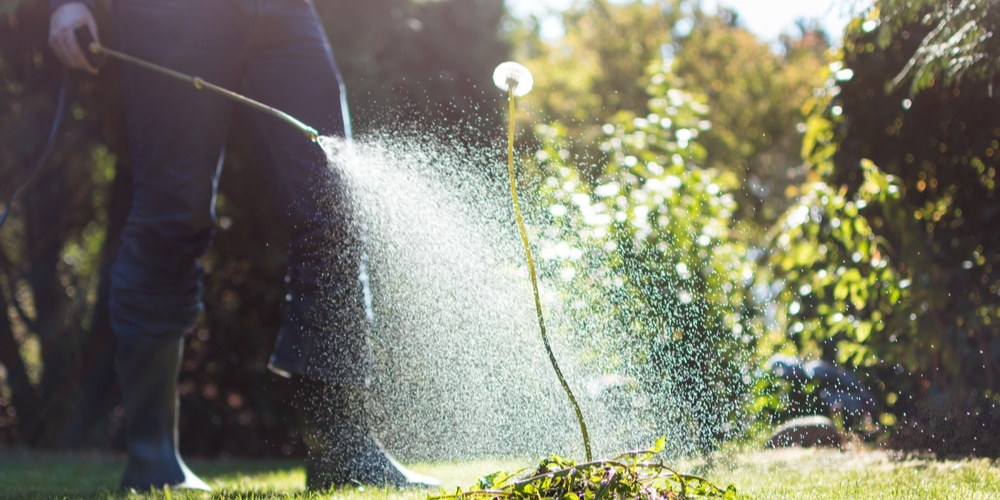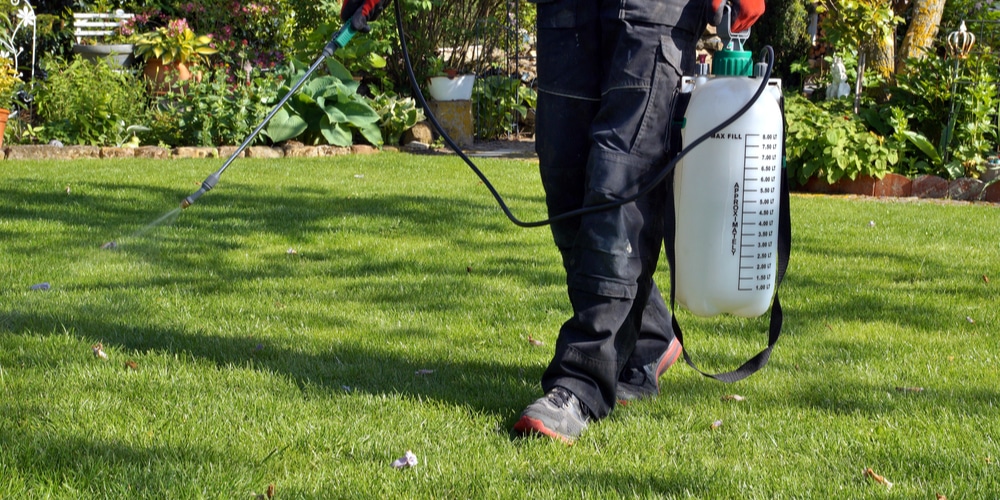Popularly known as a weed killer, glyphosate is the main component of herbicide products. For instance, Roundup is a glyphosate-based herbicide. But many people do not know this and often do not consider how long glyphosate need to be on before it rains. Knowing when to spray glyphosate is important because rain can wash it away and render it ineffective.
If you consider applying the herbicide to your plants on a rainy day, it will need 30 minutes to settle for it to be effective. Thirty minutes is usually enough for glyphosate to work because it is often used in its diluted form. Read on to understand glyphosate’s rainfast duration and the best time to kill weeds affecting your plants.
How Glyphosate Works
Glyphosate kills weeds when applied by soaking in through the leaves. The absorption process for glyphosate is relatively fast, and the herbicide spreads across all parts of the weed in approximately 24 hours.
Glyphosate is non-selective. This means it can work effectively against any weed or plant variety. When absorbed by plants, glyphosate prevents the creation of aromatic amino acids and proteins required by the plant.
Effective weed control with glyphosate is impossible if it rains immediately after application. The amount of rain-free time needed when using glyphosate to kill weeds will depend on the following:
- The nature of the target weed
- The concentration of glyphosate used
Thus, “how long does glyphosate need to be on before rain,” can be a subjective question. For instance, difficult-to-control weeds will require a longer rain-free period. Larger weeds may require up to several hours before rain for glyphosate to be effective.
On the other hand, small weeds that are easy to control will require a 30-minute rain-free period. Glyphosate is not only used as an herbicide. For instance, it can help ripen up certain types of plants and regulate plant growth.
Why Rain Affects the Efficacy of Glyphosate
Rain affects the effectiveness of glyphosate by preventing it from getting absorbed by weeds. Thus, getting the timing right when spraying your crops is key to killing all unwanted plants. The right time to spray Roundup is 30 minutes before it rains.
But 30 minutes may not be enough if you expect heavy rains under windy conditions. The herbicide may spread to other plants you did not want to harm. It is also advisable not to spray glyphosate immediately after it rains.
Plant leaves can also absorb rain droplets, which reduces glyphosate’s concentration. Additionally, it can take some time for leaves to dry after it rains. You should avoid spraying glyphosate if there is a lot of dew.
To optimize the efficacy of glyphosate, you may need to re-spray unwanted plants if it rains 6 hours after the initial spray. The best time to apply glyphosate is during the day.
Does Temperature Affect the Performance of Glyphosate?
Yes, the temperature may affect the efficacy of glyphosate. For instance, the best time to spray Roundup is during the dry season when temperatures are 60-75 Fahrenheit. However, it is not advisable to spray glyphosate during long periods of dry weather.
In temperatures under 40 degrees Fahrenheit, weed growth slows down. Thus, glyphosate is not effective in such conditions due to reduced absorption. The best time to apply glyphosate-based herbicides is during the growing stages of weeds.
Wind Up
It is impossible to permanently get rid of weeds. But, the question “How long does glyphosate need to be on before rain” could help you manage weeds better. For optimum absorption, it is advisable to spray any unwanted plants with glyphosate 30 minutes before it rains.
Always remember to practice safety first when handling glyphosate or any other herbicide.

